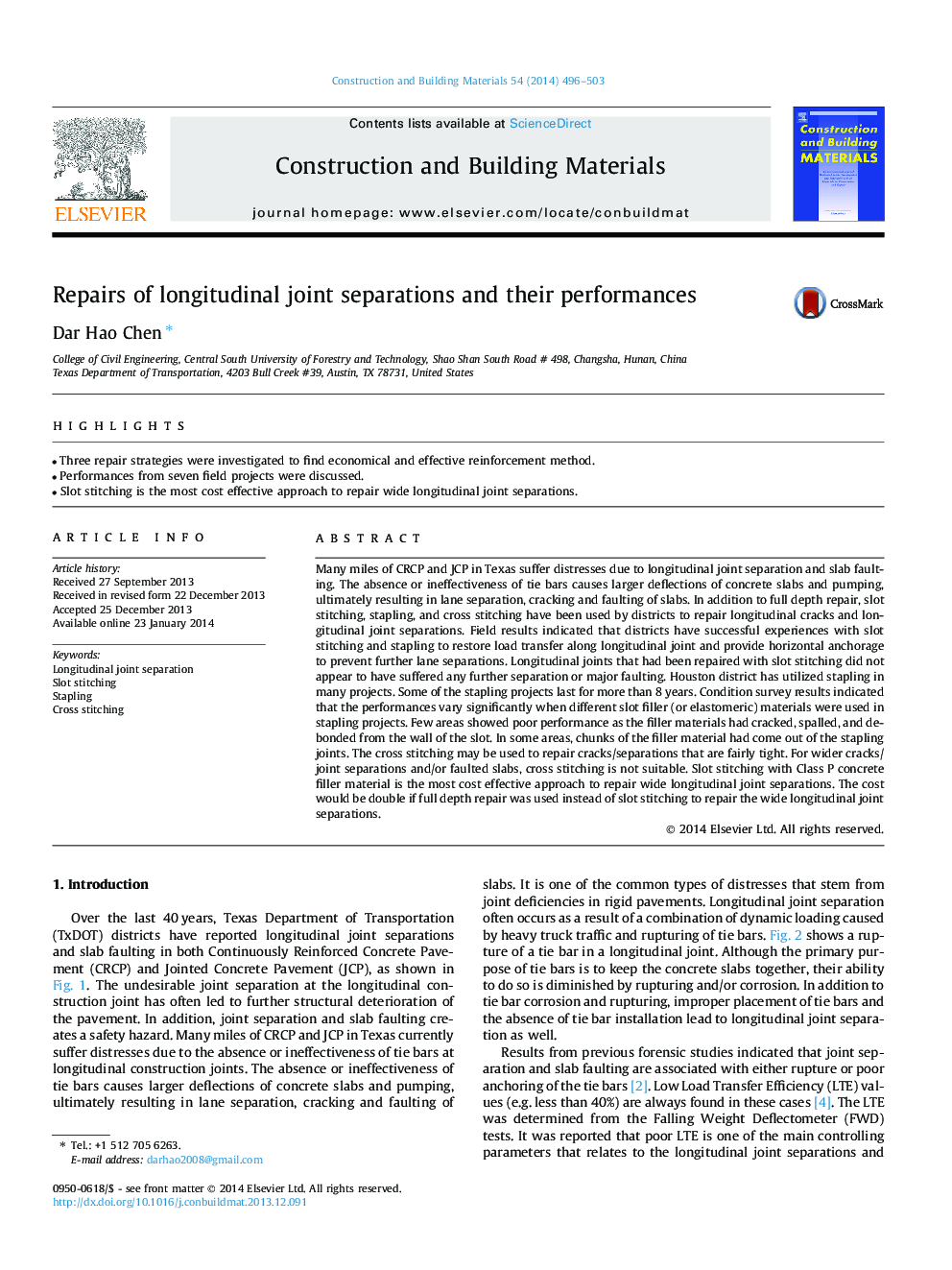| Article ID | Journal | Published Year | Pages | File Type |
|---|---|---|---|---|
| 6723928 | Construction and Building Materials | 2014 | 8 Pages |
Abstract
Many miles of CRCP and JCP in Texas suffer distresses due to longitudinal joint separation and slab faulting. The absence or ineffectiveness of tie bars causes larger deflections of concrete slabs and pumping, ultimately resulting in lane separation, cracking and faulting of slabs. In addition to full depth repair, slot stitching, stapling, and cross stitching have been used by districts to repair longitudinal cracks and longitudinal joint separations. Field results indicated that districts have successful experiences with slot stitching and stapling to restore load transfer along longitudinal joint and provide horizontal anchorage to prevent further lane separations. Longitudinal joints that had been repaired with slot stitching did not appear to have suffered any further separation or major faulting. Houston district has utilized stapling in many projects. Some of the stapling projects last for more than 8Â years. Condition survey results indicated that the performances vary significantly when different slot filler (or elastomeric) materials were used in stapling projects. Few areas showed poor performance as the filler materials had cracked, spalled, and de-bonded from the wall of the slot. In some areas, chunks of the filler material had come out of the stapling joints. The cross stitching may be used to repair cracks/separations that are fairly tight. For wider cracks/joint separations and/or faulted slabs, cross stitching is not suitable. Slot stitching with Class P concrete filler material is the most cost effective approach to repair wide longitudinal joint separations. The cost would be double if full depth repair was used instead of slot stitching to repair the wide longitudinal joint separations.
Keywords
Related Topics
Physical Sciences and Engineering
Engineering
Civil and Structural Engineering
Authors
Dar Hao Chen,
